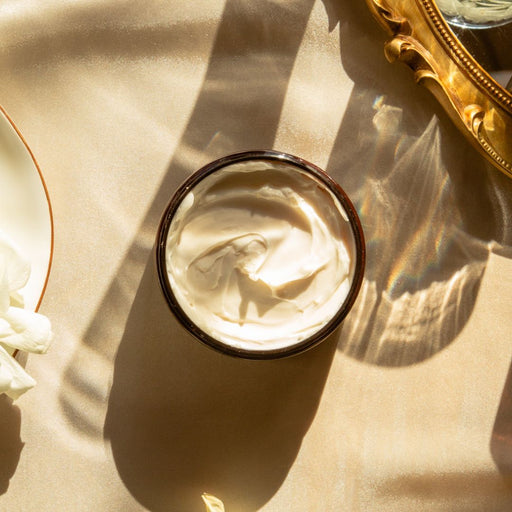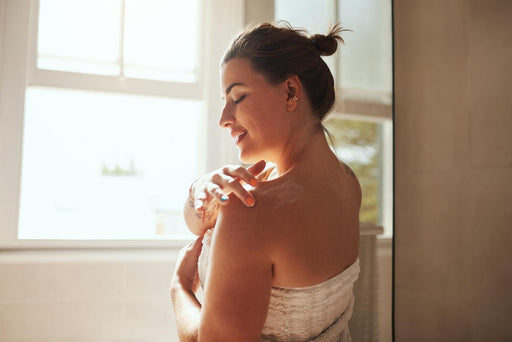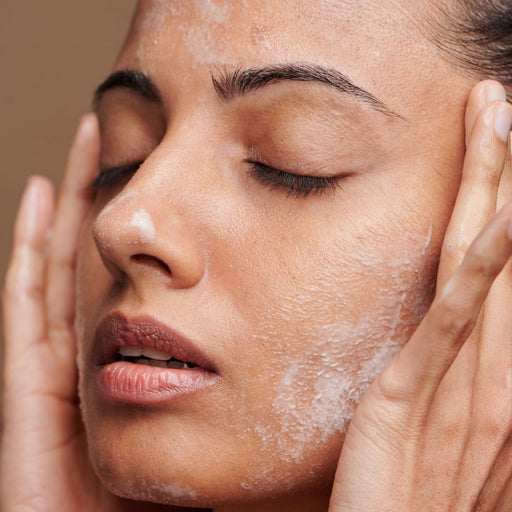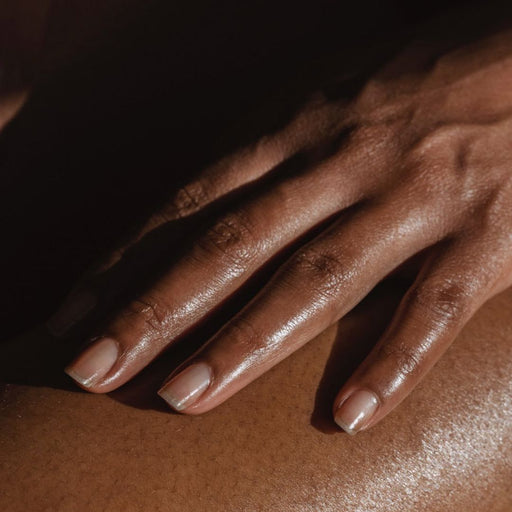Do you have more age spots on your skin than you can count? Darker patches of skin are common for women over 50 years old, but they can show up at any point in one's life.
Though treatment is far from required, there are some natural remedies that can help minimize the appearance of liver spots and other dark patches.
Whether you opt for a wrinkle-erasing hand cream or a high-SPF sunscreen, the right product can make a world of difference. Your skin deserves only the best, and it's easier than it seems to give it just that!
Keep reading, and we'll share everything there is to know about age spots and suitable treatment options.
At a Glance
- Regularly Moisturize Your Skin
- Wear Mineral-Based Sunscreen Every Day
- Take a Trip to Your Dermatologist
- Use Vitamin C to Brighten Your Skin
- Use an Anti-Aging Serum Each Night
See Related: Why Is My Skin So Dry Even When I Moisturize?
What Are Age Spots?
As you age, you might notice your skin developing small, flat spots. These tan to dark brown dots can litter the surface of your skin from your face to your knees. These blemishes are exceptionally common and are likely to appear in places that are often exposed to the sun.
Though most common in adults over the age of 50, they can appear at any point in one's life. Especially if you've spent countless summers bathing in the sun, you might have far more age spots than others.
Causes of Age Spots
As you age, your skin's ability to regenerate and renew itself decreases. It's a natural part of aging, but it might make it harder to maintain a plump and firm complexion. This also makes your skin susceptible to the development of age spots.
The primary cause of the numerous brown dots on your skin is likely sun damage. Though spending some time in the sun is a great way to get your daily dose of vitamin D, sun exposure can lead to skin damage, premature aging, skin cancer, and age spots.
How Does Sun Exposure Cause Sun Spots?
Age spots are also often referred to as sun spots because of the massive role that sun damage plays in their development. When exposed to the sun, your skin absorbs the ultraviolet radiation emitted in the form of UVA and UVB rays.
In response to this radiation, your epidermis produces melanin, the pigment that gives your skin color. Darker skin tones naturally have higher levels of melanin production than those with a lighter skin tone.
Melanin acts as a protective mechanism, helping your skin absorb and break down UV radiation. When exposed to the sun for a prolonged period of time, this process can cause the melanin to group together into small spots.
As your skin's regenerative abilities start to decrease, these clumps of pigmentation become harder to disperse. This often results in the formation of dark spots on the skin.
What Are the Risk Factors for Developing Age Spots?
Lifestyle choices can generally contribute to the appearance of age spots. Though you're more likely to develop age spots the more time you spend in the sun, even a small amount of sun exposure can lead to age spots or liver spots.
People with lighter complexions are more at risk. They already have fewer melanin-producing cells in their skin, which acts as a natural protectant. When fair skin is exposed to the sun's rays, there is a higher chance for increased melanocyte activity.
However, it's not just frequent exposure to the sun that can lead to age spots. Though an easy way to get a flawless golden glow, tanning beds are extremely damaging to your skin. Tanning beds emit UV rays just like the sun, which can lead to liver spots or age spots.
Another risk factor for sun spots is age. Age spots take time to develop, so it's more common for individuals over 40 to get them. However, as you age, it can also become harder to get rid of any new age spots.
Genetics, skin type, and medications can also affect the appearance of age spots.
How to Fade Age Spots
Developing dark spots is a natural part of the aging process. But, like wrinkles, it's OK if you want to minimize their appearance. Though it might be impossible to regain the smooth and supple skin you had in your twenties, it is possible to firm, soften, and revitalize the skin you have now!
Certain anti-aging treatments can help erase liver spots, but there are also many natural alternatives that are more gentle on your face. Let's review a few.
Bonus: Crepey Skin: Treatment, Causes and Prevention
#1. Regularly Moisturize Your Skin
Maintaining your skin's hydration levels is what keeps it healthy. This seemingly simple skincare step promotes cellular function and skin repair processes. When your skin is hydrated, it can more easily renew and regenerate itself. This allows it to shed dead skin cells and easily replenish them with new, young tissue.
As you age, these natural processes start to slow down. Your skin can't produce proteins like collagen or elastin as efficiently, which often results in wrinkles. It also can't break down clumps of pigment as easily, which often results in the appearance of age spots.
Moisturizing your skin keeps hydration levels high. It also promotes a strong skin barrier, which allows your skin to better defend against environmental stressors like UV rays.
Though moisturizing ingredients like coconut oil, shea butter, and hyaluronic acid are often enough to keep your skin healthy, opting for products infused with antioxidants, vitamins, and other nutrients makes it easier to erase those pesky sun spots for good.
A Body Creme That Smooths Texture and Treats Age Spots
Our best-selling Candlenut Body Creme is a fast-absorbing, non-greasy body lotion. It's formulated with a myriad of moisturizing elements like illipe butter, candlenut oil, and avocado oil to promote hydration. It's also rich in omega fatty acids that enhance skin barrier function and is a great source of vitamin E.
Vitamin E is a potent antioxidant that neutralizes free radicals and protects the skin from oxidative stress. It promotes skin healing and regeneration, which can help prevent age spots.
For an additional dose of vitamins and essential skin nutrients, follow up with the Kartini Body Oil. This skin-brightening dry oil is designed to seal the moisture in your skin and improve hydration.
It's full of vitamin C, flavonoids, and vitamins that promote skin health. Plus, one of its primary ingredients is plumeria flower, a traditional botanical that provides natural UV protection.
#2. Wear Mineral-Based Sunscreen Every Day
If you want to fade age spots, you need to make prevention a priority. Continued sun exposure simply accelerates pigment production, which causes liver spots. This will sabotage any age spot treatments you're undergoing and will also activate the development of new skin spots.
Applying sun protection should be an integral part of your wellness ritual, just like eating healthy and practicing mindfulness. It will pay off in the long run, even if you don't see instant results. In a world obsessed with fast fixes, it's the things you do that work over the long term that will really make a difference.
Brown spots tend to recur, meaning they'll keep coming back even if you get rid of them. That's why maintaining a good prevention routine is key. That's where sunscreen comes into the picture.
A mineral-based or broad-spectrum sunscreen is a must. Opt for products containing titanium dioxide and zinc oxide, which are better at protecting your skin from UVA and UVB rays. The American Academy of Dermatology recommends using at least an SPF 30 sunscreen.
Though sunscreen will do a lot to protect your skin, it's not an end-all-be-all. You should also wear protective clothing on sun-exposed areas, like a wide-brimmed hat or a lightweight, long-sleeve tee. If caught outside on a bright day, seek shade.
#3. Take a Trip to Your Dermatologist
Though natural alternatives are often the better choice, some women opt for dermatological treatment options for age spots.
Here are a few treatment options that you can get from a board-certified dermatologist for age spots or brown spots:
-
Cryotherapy - This skin-freezing treatment involves liquid nitrogen being applied to the skin.
-
Laser treatment - Laser treatments involve intense-pulsed light being aimed at age spots.
-
Dermabrasion - A brush is used to exfoliate the top layer of skin so that new tissue can replace it.
-
Chemical peels - This is a chemical solution applied to the face that dissolves the upper layer of skin. Chemical peels are a go-to topical treatment for people with liver spots.
-
Prescriptions - Some prescription remedies contain retinoids or a mild steroid that can help rid the skin of age spots.
#4. Use Vitamin C to Brighten Your Skin
Certain ingredients can help brighten the skin and lighten age spots and dark spots. Vitamin C is one of the most well-known brightening agents and is often utilized in anti-aging skincare products.
A vitamin C serum is also a great alternative to harmful skin-lightening products or skin-lightening creams.
A Natural Alternative to Chemical Peels
Vitamin C's anti-aging and skin-brightening abilities come from its antioxidant properties. This vitamin can help protect the skin from oxidative stress caused by UV exposure. It also promotes new cell growth and collagen synthesis.
When it comes to treating age spots, it's hard to go without vitamin C. That's why it's in our Miracle Tea Eye Creme. This skin-brightening eye cream is one of our many skincare products inspired by ancient Indonesian wellness rituals. It's also rich in nutrients like vitamin C and vitamin B.
Infused with all-natural ingredients and premium botanicals, this eye treatment is ideal for dark circles, baggy under-eyes, and wrinkles. It can even help minimize age spots in the most delicate parts of your face.
#5. Use an Anti-Aging Serum Each Night
An anti-aging skin serum can provide a tailored approach to skincare. The right products should be able to reduce the appearance of anything from fine lines and wrinkles to hyperpigmentation and age spots.
A must-have formula for your spot-erasing beauty routine should be JUARA's iconic Clove Flower & Turmeric Anti-Aging Serum.
This juicy gel serum is packed with ingredients that feel good and look good on your skin. In addition to goji berry and palm peptide, it also contains a Radiance Complex. Our Radiance Complex is a unique blend of botanicals that is high in vitamin C, making it the perfect formula for aging skin.
Final Thoughts
If you're looking to treat age spots, you might be tempted by the chemical peels and laser resurfacing offered by doctors. However, these procedures and treatments aren't always the best choice for those with sensitive skin.
Whether you use a DIY apple cider vinegar & lemon juice rinse or topical creams, there are many natural ways to rid your skin of age spots for good!
Keep Reading: What Is Combination Skin & 4 Signs You Have It
--
Juara Skincare incorporates ancient rituals with Western skincare science, creating the ultimate beauty experience. We aim to transport you from the mundane to the extraordinary with our exotic ingredients, intoxicating scents, and powerful, skin-improving formulas. All of our products are nutrient-rich and botanically based. We are proud to be certified cruelty-free. Get the latest skin care tips and info on Juara products by following us on Twitter, Facebook, Instagram, LinkedIn, and Pinterest.














